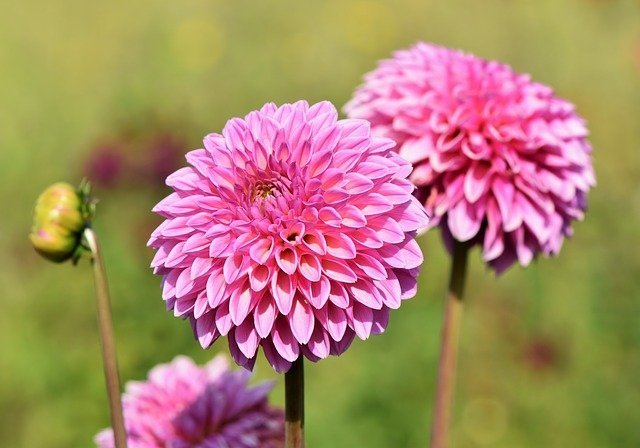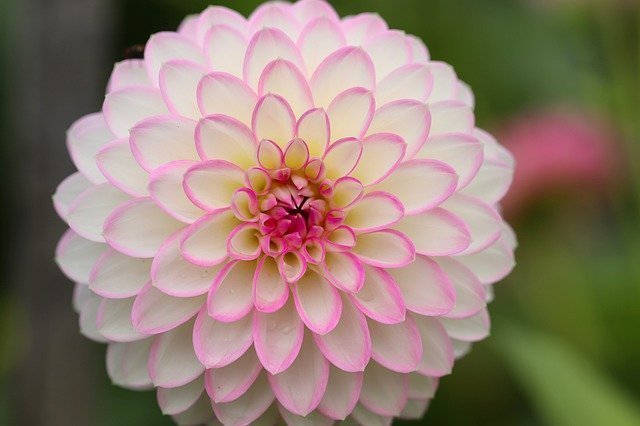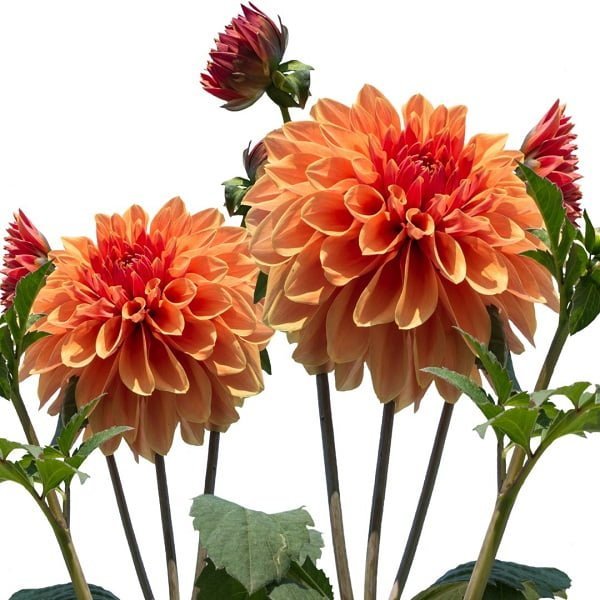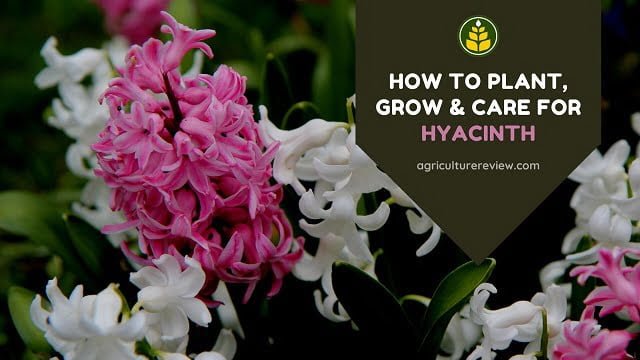Hey, are you excited to know about Dahlia care? If yes, then you are on the right page. Agriculture Review will guide you everything about dahlia care.
Who doesn’t love to grow National flower of Mexico i.e. Dahlia in their garden. And I’m sure that you are planning to grow one or many in your garden. But worried about caring this plant. Well, after reading this article your tension will turn into passion.
But before knowing how to care for dahlia plant, let’s read a little introduction, written with love for this beautiful flowering plant. Moreover, after reading this article you will be able to know care guide along with pest and disease control.
Table of Contents
Introduction
Dahlia is not only a name for a flowering plant but it is a name of a genus. This genus consist of tuberose, herbaceous, perennial flowering plants that we commonly call Dahlia. This plant is native to Mexico and Central America.
With over 42 varieties having beautiful morphology of flowers and alluring colour shades, this plant is definitely, one of the best choice for gardeners. Moreover, depending on the variety, flower size and number can differ.
One more important point, even if they are perennials but under extreme climatic conditions they can not survive. Although in North America or areas in plant hardiness zones 8 to 11, you can grow them as perennials.
Check out my video to learn about caring dahlias in your garden.
Dahlia Care
To grow a plant perfectly, you have to know basics! I see many people failing at gardening because they just don’t follow the right guide. Although some may get lucky but to grow a plant successfully you have to know growing season, potting mix, selection of pot, Sunlight, watering and fertilizers requirements.
In addition to this pest and disease infestations are other problems that you need to care about. But don’t worry, Agriculture Review is your guide. I am going to tell you all these necessary points in this article!

Growing Season
Growing season for dahlia can vary from place to place. Generally you can start growing this plant during spring season in temperate or hilly regions. And during fall or late summer season in sub tropical to tropical regions.
In places having extreme winters, dahlia are grown as summer flowering plants but in tropical regions like India, they are grown as winter flowering plants. At both these places they can be grown as annuals.
But, if you are in North America then you can grow this flowering plant during spring as well as during fall. In North America they grow as perennials.
Potting Mix
Dahlia loves well drained, sandy loam soil that is rich in organic matter. If the soil pH is 6.5 to 7.0 then it’s wonderful. You don’t need to prepare potting mix if your soil is already sandy loam. You can find your soil type by searching on google.
But, if your soil is clayey that have water holding properties then you will have to prepare potting mix. For clayey soil, prepare potting mix with 30% garden soil + 20% cocopeat + 10% sand + 40% any organic compost.
But for sandy loam soil, only adding organic compost 40% and 60% garden soil will work good. Furthermore, in both these cases you can add handful of neem cake fertilizer and half teaspoon bone meal.
Selection of Pot
For dahlias, I suggest you to buy 8 to 12 inch sized containers with at least 2 to 4 drainage holes at the bottom. Earthen pots are considered very good for growing dahlias. But you can also grow them in cemented or plastic pots.
Few expert gardeners also loves to grow dahlia in growing bags annually. Growing bags are best alternative if you are short of space or you do not want to have heavy weight containers.

Sunlight
Dahlia loves to grow under direct sunlight. If you will place your pot in the area that receives at least 6 to 8 hours of direct sunlight then your plant will be more healthy and produce good amount of flowers to put a big smile on your face.
If your garden do not receive good amount of sunlight then at least try to place the pot in the region where it can get morning sunlight.
Watering
Dahlia can survive and perform well if you add water in the pot when the top layer of soil becomes dry. Adding too much water for this plant can cause root rot disease. Also keep checking drainage after watering.
Avoid waterlogging in the soil. During winters you can water your plant twice in a week. But, I prefer adding water when required by the plant. And you can realise that from soil moisture.
Fertilizers
You can start feeding your plant one month after transplantation. Do not feed with excessive amount of fertilizers or nitrogen rich fertilizers. Adding excess fertilizers can give good results is a myth. But adding appropriate amount of fertilizers can give you better results.
Avoid adding nitrogen rich fertilizers in case of dahlias. Nitrogen rich fertilizers can cause plants to have small to zero blooms. Fertilize your plant with half teaspoon of NPK in the ratio 5:10:10 or 10:20:20 once after every 30 days.
If you want to add organic fertilizers only then you can add two handful of organic fertilizers like vermicompost, once after every 30 days. Along with this add half teaspoon bone meal for better flowering.
Nowadays gardeners have stared using waste decomposer that is very beneficial for plants. It acts as both fertilizers and pesticides. It is completely organic. If you want to learn more about waste decomposer then visit the link below.
READ MORE: WASTE DECOMPOSER-BENEFITS AND USES!
Pest and Disease
Pests such as slugs, snails, aphides, mites, cucumber beetle, etc. can damage your plants. Keep checking your plant for any infestation regularly. You can control snails and slugs by spraying salt water solution on snails and slugs.
For mites and beetles, I prefer spraying neem oil mix as a foliar spray on the plant. If you don’t know how to prepare neem oil spray for plants then you can visit the link below.
READ MORE: HOW TO PREPARE AND USE NEEM OIL SPRAY
If your plant is infested with aphids then checkout this article to control aphids and save your plant efficiently!
READ MORE: LEARN TO SAVE YOUR PLANTS FROM APHIDS!
For diseases. you have to be aware about Powdery Mildew. They can sometimes create problems in your plant.
READ MORE: HOW TO CONTROL POWDERY MILDEW?

Pinching and Disbudding
If you want to make your dahlia plant bushier them pinch out 3 to 4 inch of main branch when it reaches one feet of height. This will promote the growth of lateral branches to make the plant bushier. But, don’t worry your plant will also grow tall.
Disbudding of flower buds is a technique that you can use to get large sized and beautiful flowers. If in a single branch there is more than two flower buds then you can remove few buds and keep one to two buds in the branch.
This will help the plant to focus and promote the growth of the single flower. Hence the main flower will get healthy and larger.
Stalking
If you are growing dwarf variety of dahlia then you do not need to care much about stalking. But, if you are growing tall variety dahlias or your garden have high pressure wind flow then your plant will need support to grow.
Provide support to your plant with a wooden stick of appropriate size. Tie the plant with a soft rope to the stick gently. This will help the plant to hold against high pressure wind.
Follow these important points to care for your dahlia plant. If you are facing any problems while growing this plant then you can contact us or comment below. I will be quite happy to help you out! You can also check out other interesting and beneficial articles to know more!


